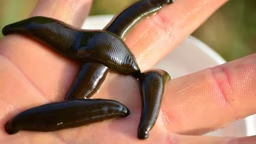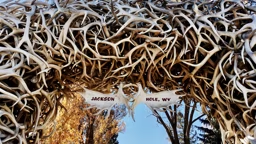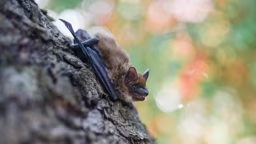All owls are predators and effective in their control of farm and garden pests, cabin critters and the ebb and flow of nature’s balance – whether the prey scurries on four legs or on six. Burrowing owls dine on grasshoppers, and just about all species of owls eat mice, voles and lemmings. When rabbits are breeding, owls keep careful watch on the population. Great horned owls are famous for their lack of any sense of smell and the habit that goes so nicely with that attribute – dining on skunks. For such an attack, the feet of a horned owl are fiercely armed.
The basic tools of survival – sharp talons, strong feet and a hooked beak – are similar to those of hawks. Hunting at night broadens the playing field, allowing owls to coexist with hawks without ever actually meeting one.
For their night hunts, owls are equipped with some very unique features, including soft, bristled and silenced wing feathers, and a host of adaptations linked to improved hearing. Feathers around the face form concave “dishes” that gather up sound and focus it directly to the ear. The ears of an owl are placed unevenly along the sides of the head, one higher than the other, allowing owls to quickly triangulate on the diminutive nibbling and scurrying sounds of prey. A single boney condyle (humans have two) at the base of the skull allows the owl to turn its head more than 180 degrees around. This advanced hearing package allows great gray owls to locate mice moving a couple of feet below the sparkling cover of fresh snow and allows barn owls to take prey in complete darkness.
Camouflaged feathers help many species of owls to rest and digest their food, completely undetected in the daylight hours.
And how about those ear tufts, the things that look like ears? Well, not all owls have them, and they are actually feathers, not ears. Biologists have often mused at the advantage of looking like a cat when defending your kill against a wild cat. Siberian eagle owls and great horned owls, among the largest of owls, must defend their kills against lynx and bobcats. Both owls have pronounced ear tufts and bright, cat-like eyes. Fluffing and raising body feathers enhances the illusion of being a very big and potentially ferocious feline, despite the “big” owl’s body weighing merely two pounds. Since predators are reluctant to risk injury to obtain food, the ploy works without a scuffle.
Owls among your cabin critters. You certainly have owls in your neck of the woods. Owls of all shapes and sizes call a variety of habitats home. Short-eared owls thrive in the expanses of open prairie. Long-eared owls enjoy the cover of dense conifer trees. Your mysterious neighbors nest in tree cavities, saguaro cacti cavities, wood duck houses, abandoned crow nests, barn lofts and the abandoned burrows of animals.
As stars reflect on windowpanes and a sleepy chill sends you in for your quilt, remember that, for some, the day has just begun. Lace up your boots. Head for the wild. Take a nighttime adventure around your cabin to explore the mystery of owls.
Brian M. Collins doesn’t take his friends bowling. He prefers to lose the “b” and take them owling.
The basic tools of survival – sharp talons, strong feet and a hooked beak – are similar to those of hawks. Hunting at night broadens the playing field, allowing owls to coexist with hawks without ever actually meeting one.
For their night hunts, owls are equipped with some very unique features, including soft, bristled and silenced wing feathers, and a host of adaptations linked to improved hearing. Feathers around the face form concave “dishes” that gather up sound and focus it directly to the ear. The ears of an owl are placed unevenly along the sides of the head, one higher than the other, allowing owls to quickly triangulate on the diminutive nibbling and scurrying sounds of prey. A single boney condyle (humans have two) at the base of the skull allows the owl to turn its head more than 180 degrees around. This advanced hearing package allows great gray owls to locate mice moving a couple of feet below the sparkling cover of fresh snow and allows barn owls to take prey in complete darkness.
Camouflaged feathers help many species of owls to rest and digest their food, completely undetected in the daylight hours.
And how about those ear tufts, the things that look like ears? Well, not all owls have them, and they are actually feathers, not ears. Biologists have often mused at the advantage of looking like a cat when defending your kill against a wild cat. Siberian eagle owls and great horned owls, among the largest of owls, must defend their kills against lynx and bobcats. Both owls have pronounced ear tufts and bright, cat-like eyes. Fluffing and raising body feathers enhances the illusion of being a very big and potentially ferocious feline, despite the “big” owl’s body weighing merely two pounds. Since predators are reluctant to risk injury to obtain food, the ploy works without a scuffle.
Owls among your cabin critters. You certainly have owls in your neck of the woods. Owls of all shapes and sizes call a variety of habitats home. Short-eared owls thrive in the expanses of open prairie. Long-eared owls enjoy the cover of dense conifer trees. Your mysterious neighbors nest in tree cavities, saguaro cacti cavities, wood duck houses, abandoned crow nests, barn lofts and the abandoned burrows of animals.
As stars reflect on windowpanes and a sleepy chill sends you in for your quilt, remember that, for some, the day has just begun. Lace up your boots. Head for the wild. Take a nighttime adventure around your cabin to explore the mystery of owls.
Brian M. Collins doesn’t take his friends bowling. He prefers to lose the “b” and take them owling.
Whooo knows the mysterious owl?
Big snowflakes are falling like feathers in a forest along the Mississippi River. It’s potbelly stove time at the cabin.
A great horned owl shifts on her clutch of eggs while surveying the scenic and snowy bluffs. She is ringing in the New Year with new life.
Her mate, however, feeds the promise of new life with fresh blood on the snow. On silent wings, he descends on an unsuspecting cottontail, sinking in his lethal talons. The scuffle is clearly audible in the still of the clear night, and it will likely cause the guests of a Mississippi River cottage to discuss peculiar shrieks and night sounds over breakfast.
Owls are mysterious to all of us, even to the birdiest of birders who have binoculars in every nook of the cabin. A good look at an owl is a rare treat.
All of this mystery has a lot more to do with the owls’ nocturnal habits and a lot less to do with how common they are – a fact easily proven when we turn our ears to the woods for answers. Going into the great outdoors for a bout of owling can be very revealing, whether mid-winter or early spring.
From one single listening post near a narrow trout river, I once heard the tiny, quavering whinnies of at least two screech owls, the rowdy “Who Cooks for YOU ALLLL!” of a barred owl and the seemingly distant and reserved hoots of dueling great horned owls. Though my eyes saw only moonlight on sparkling snow and the shadows of distant forests, my ears had detected no fewer than five owls of three species – a statistic that would make any sensible mouse curl up and go back to bed.
When the sun rises, clues to owls’ whereabouts are everywhere. A daytime stroll reveals a din of crows in relentless pursuit of a horned owl. Searching the ground below a popular owl roost may produce an owl pellet or two, undigested clusters of bones and hair regurgitated in a compact package. Body feathers – unusually soft and delicate – cling to twigs at eye level, evidence of night pouncing. If you have snow in your area, telltale wing marks and a small hole in the snow reveal the location of a short struggle, a successful catch. If you’re a lucky explorer you may even locate a flight feather from the wing of an impressive stealth predator. But remember to leave it where you found it when you’re done so others may find it! Besides, owl feathers – like those of most native birds – are protected by law.
Big snowflakes are falling like feathers in a forest along the Mississippi River. It’s potbelly stove time at the cabin.
A great horned owl shifts on her clutch of eggs while surveying the scenic and snowy bluffs. She is ringing in the New Year with new life.
Her mate, however, feeds the promise of new life with fresh blood on the snow. On silent wings, he descends on an unsuspecting cottontail, sinking in his lethal talons. The scuffle is clearly audible in the still of the clear night, and it will likely cause the guests of a Mississippi River cottage to discuss peculiar shrieks and night sounds over breakfast.
Owls are mysterious to all of us, even to the birdiest of birders who have binoculars in every nook of the cabin. A good look at an owl is a rare treat.
All of this mystery has a lot more to do with the owls’ nocturnal habits and a lot less to do with how common they are – a fact easily proven when we turn our ears to the woods for answers. Going into the great outdoors for a bout of owling can be very revealing, whether mid-winter or early spring.
From one single listening post near a narrow trout river, I once heard the tiny, quavering whinnies of at least two screech owls, the rowdy “Who Cooks for YOU ALLLL!” of a barred owl and the seemingly distant and reserved hoots of dueling great horned owls. Though my eyes saw only moonlight on sparkling snow and the shadows of distant forests, my ears had detected no fewer than five owls of three species – a statistic that would make any sensible mouse curl up and go back to bed.
When the sun rises, clues to owls’ whereabouts are everywhere. A daytime stroll reveals a din of crows in relentless pursuit of a horned owl. Searching the ground below a popular owl roost may produce an owl pellet or two, undigested clusters of bones and hair regurgitated in a compact package. Body feathers – unusually soft and delicate – cling to twigs at eye level, evidence of night pouncing. If you have snow in your area, telltale wing marks and a small hole in the snow reveal the location of a short struggle, a successful catch. If you’re a lucky explorer you may even locate a flight feather from the wing of an impressive stealth predator. But remember to leave it where you found it when you’re done so others may find it! Besides, owl feathers – like those of most native birds – are protected by law.












